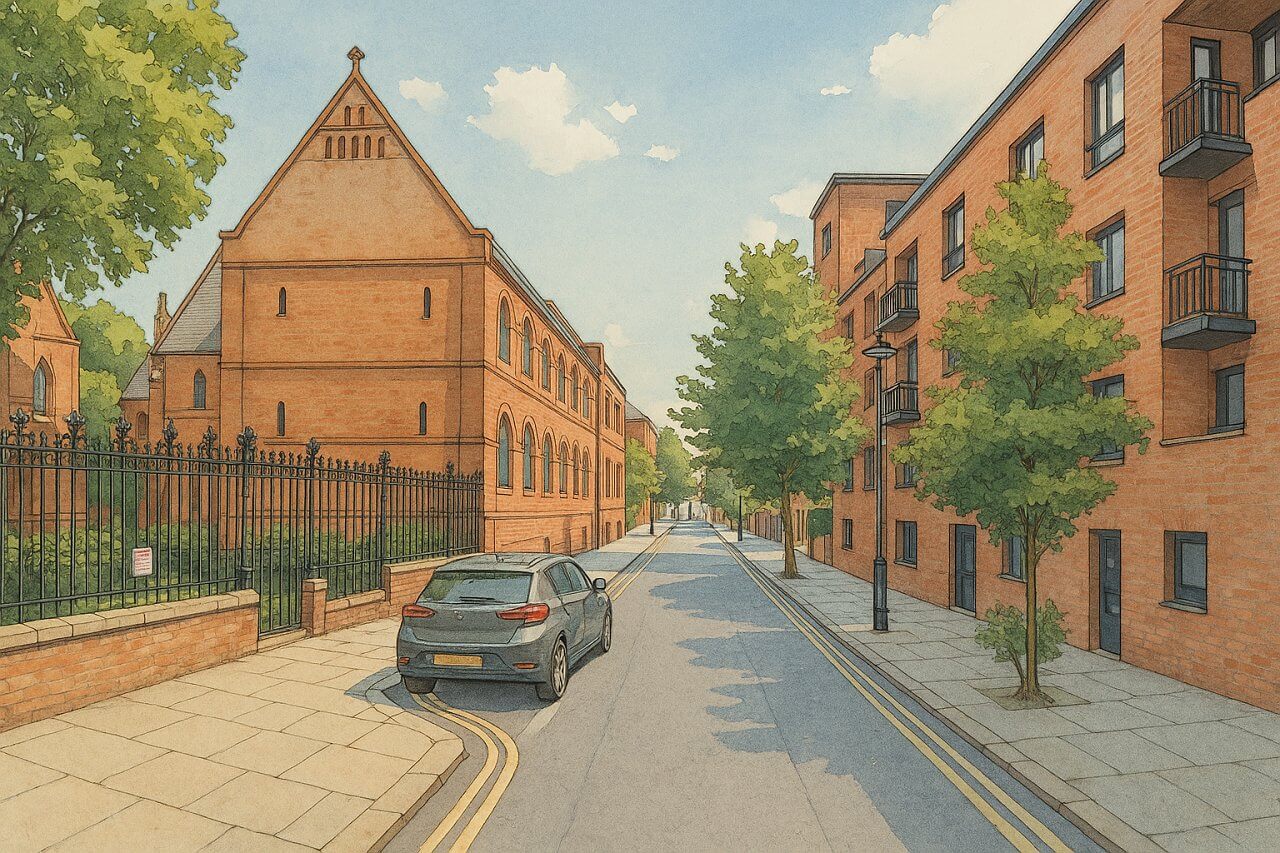
Moreton Street, London
Charming and residential, Moreton Street in Pimlico is a quiet road that showcases mid-19th-century architecture, garden squares, and elegant living near central London.
Moreton Street is situated in Pimlico, in the heart of the City of Westminster. It lies just south of Victoria and east of Belgravia, connecting Moreton Terrace in the southwest to a cul-de-sac near Vauxhall Bridge Road in the northeast. Although it once extended all the way to the main road, that junction has been removed, and the end is now pedestrianised. The street is part of Pimlico’s distinctive grid layout, and is intersected by Belgrave Road and Tachbrook Street, with branches leading to Moreton Place, Garden Terrace, and Thorndike Street.
How Long is Moreton Street?
Moreton Street is approximately 350 metres (about 1,150 feet) in length. It stretches diagonally northeast to southwest and is part of a highly walkable area. Despite its modest size, it plays a notable role in Pimlico’s urban pattern and offers a peaceful residential feel within easy reach of central London amenities.
History of Moreton Street
Moreton Street was laid out in the early-to-mid 19th century as part of the development of Pimlico by the Grosvenor Estate, specifically under the oversight of the landowning family led by the Marquis of Westminster. The Pimlico grid pattern was largely created by builder Thomas Cubitt from the 1820s through the 1850s, known for his influence on London’s residential architecture. Moreton Street’s original buildings mostly date from the 1840s and 1850s, reflecting the Regency and early Victorian styles popular at the time.
Origin of the Name “Moreton Street”
The street likely takes its name from the Moreton family, who may have had historic connections to the area or to the Grosvenor Estate. The name appears in Pimlico from the 1840s, concurrent with the street’s construction. As with many street names in the district, the naming was designed to give an air of distinction and continuity across the estate.
Character of the Road
Moreton Street has a distinctly residential character, with attractive four-storey stucco-fronted terraced houses that are typical of Cubitt’s Pimlico designs. The buildings often feature black railings, sash windows, and columned entrances. The street is relatively quiet and tree-lined, offering a combination of converted flats and whole family homes. Some houses have been divided into flats, while others remain single dwellings. There are small garden plots in front of many houses, enhancing the sense of greenery. The pedestrianised northeast end contributes to the street’s tranquil atmosphere.
Streets connected to Moreton Street
The following streets form either junctions or intersections with Moreton Streets.
Sights and Landmarks Nearby
While Moreton Street itself is primarily residential, it is within walking distance of several interesting locations:
- Pimlico Gardens – A small riverside park just west of Vauxhall Bridge.
- Tate Britain – One of the UK’s leading art museums, located a 10-minute walk away on Millbank.
- St George’s Square – A picturesque garden square just two blocks south of Moreton Street.
- Lupus Street Market Stalls – A small but vibrant market area just beyond Tachbrook Street.
There are also numerous small cafés, convenience stores, and pubs in the surrounding streets, such as The Gallery and The Queens Arms.
Real Estate and Property Prices
As of May 2025, properties on Moreton Street tend to be priced at a premium due to their central location and heritage appeal. Prices vary depending on the type and size of the home:
- One-bedroom flats (approx. 550 sq ft / 51 sq m): £600,000–£750,000
- Two-bedroom flats (approx. 800 sq ft / 74 sq m): £850,000–£1.1 million
- Whole houses (1,600–2,200 sq ft / 149–204 sq m): £2.2 million–£3.5 million
Compared to average London prices, Moreton Street is considerably more expensive than outer boroughs, but remains more affordable than nearby Belgravia or parts of Chelsea.
Nearest London Underground Stations
The closest Underground station is Pimlico (Victoria line), just a 5-minute walk to the southeast. For additional connections, Victoria Station (Victoria, District, Circle lines and National Rail) is about a 12-minute walk north. These stations provide direct access to major destinations such as Oxford Circus, Green Park, King’s Cross and Paddington.
Bus Connections
Nearby bus stops are located along Belgrave Road and Lupus Street, offering service on several routes including:
- Route 24 – Hampstead Heath to Pimlico
- Route C10 – Victoria to Canada Water
- Route 360 – Elephant & Castle to Royal Albert Hall
These provide convenient access across central London, especially for residents without a car.
Fun Fact
Moreton Street has featured in a number of period film and TV productions due to its well-preserved Victorian aesthetic. Its quiet setting and uniform facades make it a favourite among location scouts. It has also been used for backdrops in documentaries exploring London’s Georgian and Victorian urban planning.
Quick Facts
- Location: Pimlico, City of Westminster
- Length: Approx. 350 metres (1,150 feet)
- Connects: Moreton Terrace to a cul-de-sac near Vauxhall Bridge Road
- Intersects: Belgrave Road, Tachbrook Street
- Branches to: Moreton Place, Garden Terrace, Thorndike Street
- Nearest Tube: Pimlico (Victoria line), Victoria Station (Victoria, District, Circle lines)
- Bus Routes: 24, C10, 360 nearby
- Architectural Style: Mid-19th-century stucco-fronted terraces
- Real Estate Prices (May 2025): Flats from £600k+, houses £2.2m–£3.5m
- Fun Fact: Frequently used as a filming location for Victorian-themed productions
Map of Moreton Street, London

Painting of Moreton Street, London (View image in full size)